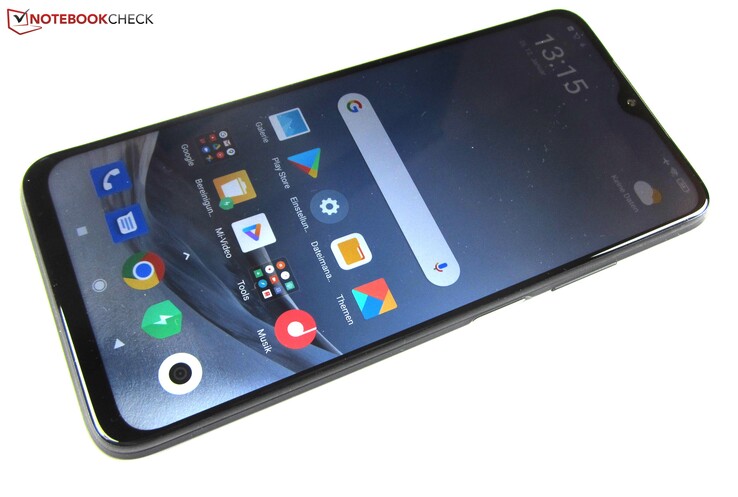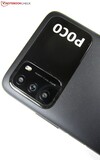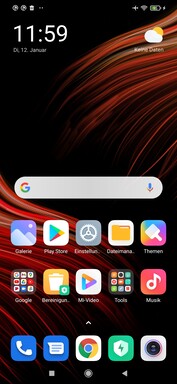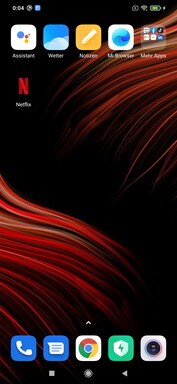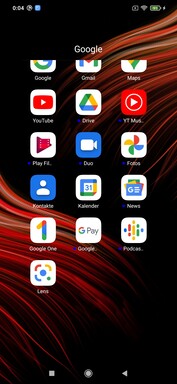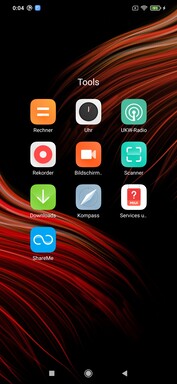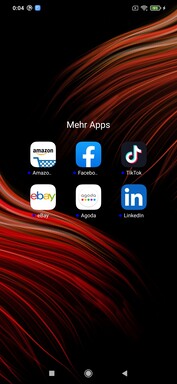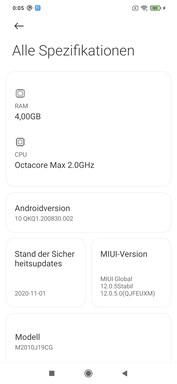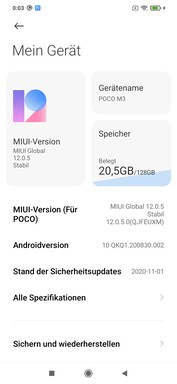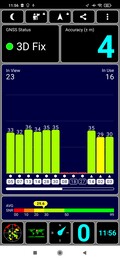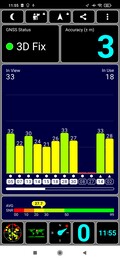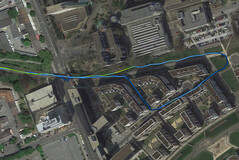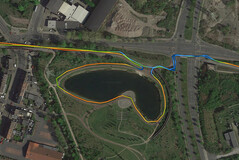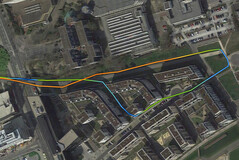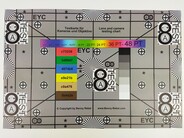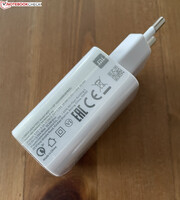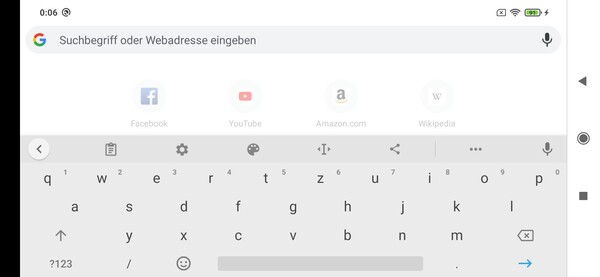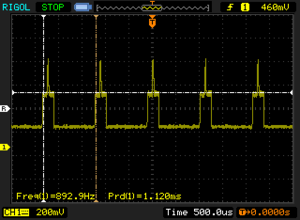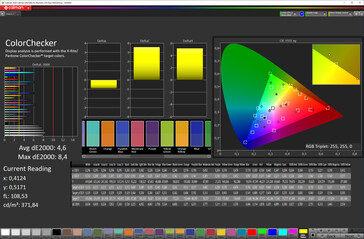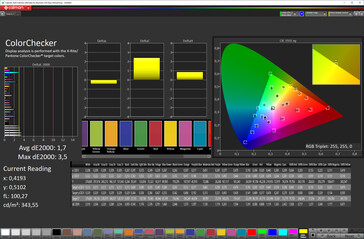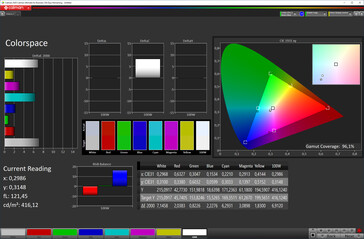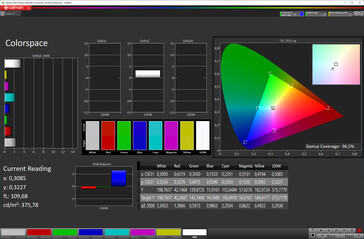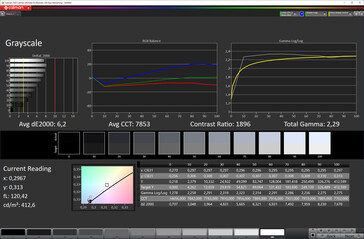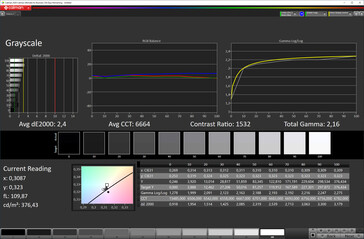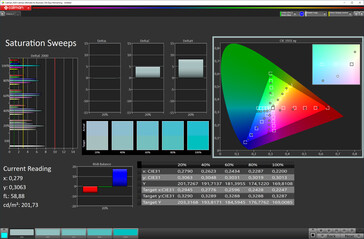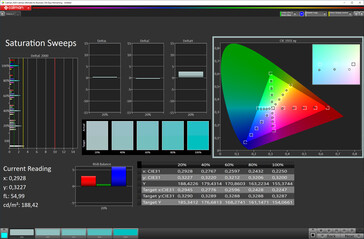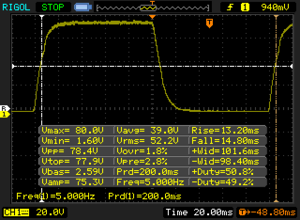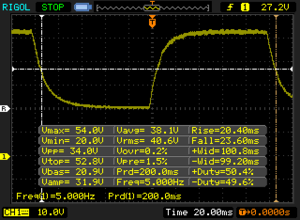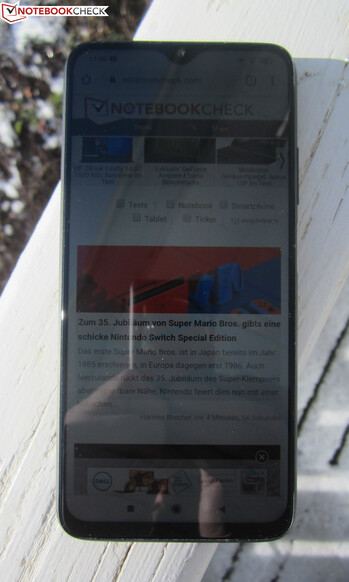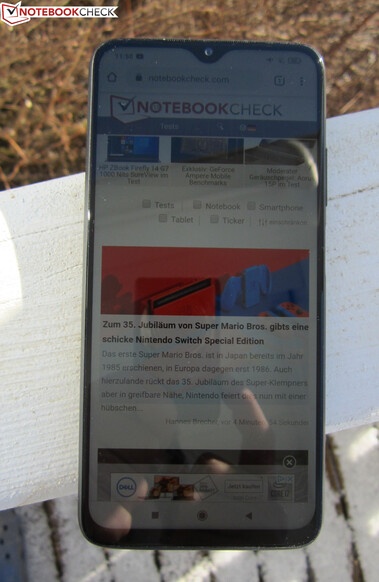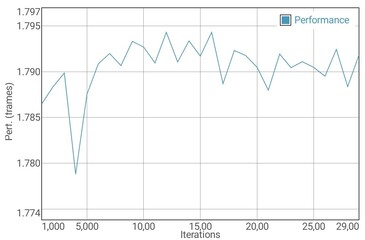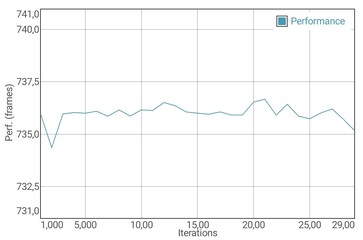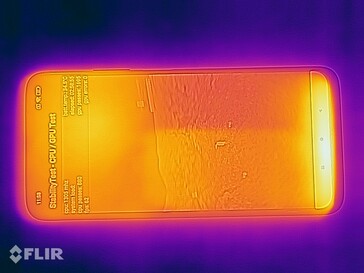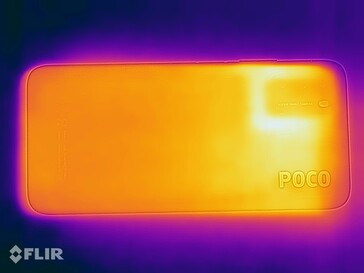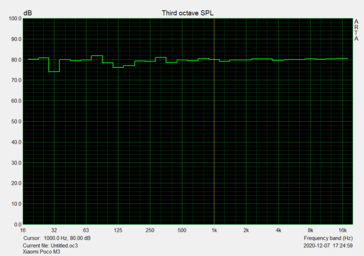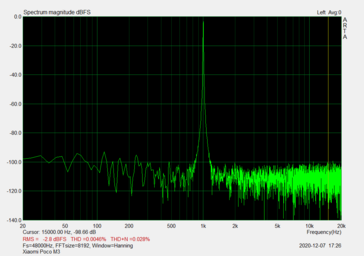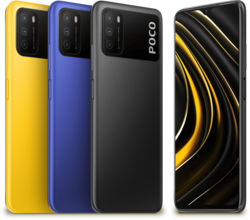Xiaomi Poco M3 Smartphone Review: The 150-Euro smartphone
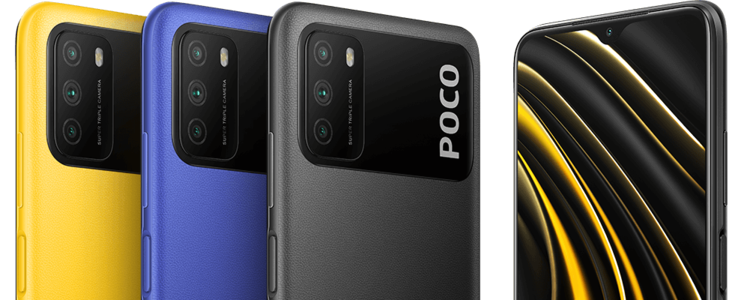
"Exceeds your expectations" – this is how Xiaomi summarizes the characteristics of its Poco M3 entry-level smartphone in brief. And in fact, despite its low price, the currently most affordable Poco model does bring hardware that you probably would not have expected to this extent.
The Poco M3 is officially available starting from 150 Euro (~$181). For this amount, you will get a 6.53-inch smartphone with 4 GB of RAM, 64 GB storage, Android 10, an IPS display with a 2340 x 1080 pixel resolution, and the Snapdragon 662 as the central processing unit. While this does not turn the Poco M3 into a rocket, there should be sufficient performance for everyday usage. And considering the huge battery capacity, you can also easily use it for much longer.
This single equipment characteristic makes the Poco M3 particularly interesting: with its 6000-mAh battery, the Xiaomi smartphone possesses more battery capacity than most other smartphones. Our test will show whether the overall package is right.
Possible Competitors in Comparison
Rating | Date | Model | Weight | Drive | Size | Resolution | Price |
|---|---|---|---|---|---|---|---|
| 78 % v7 (old) | 01 / 2021 | Xiaomi Poco M3 SD 662, Adreno 610 | 198 g | 128 GB UFS 2.2 Flash | 6.53" | 2340x1080 | |
| 77.9 % v7 (old) | 10 / 2020 | Motorola Moto G9 Play SD 662, Adreno 610 | 200 g | 64 GB eMMC Flash | 6.50" | 1600x720 | |
| 79.7 % v7 (old) | 11 / 2020 | Realme 7 Helio G95, Mali-G76 MP4 | 196.5 g | 128 GB UFS 2.1 Flash | 6.50" | 2400x1080 | |
| 79.7 % v7 (old) | 09 / 2020 | Samsung Galaxy M21 Exynos 9611, Mali-G72 MP3 | 188 g | 64 GB UFS 2.1 Flash | 6.40" | 2340x1080 | |
| 75.1 % v7 (old) | 10 / 2020 | Sony Xperia L4 Helio P22 MT6762, PowerVR GE8320 | 178 g | 64 GB eMMC Flash | 6.20" | 1680x720 | |
| 79.9 % v7 (old) | 09 / 2020 | Xiaomi Redmi Note 9 Helio G85, Mali-G52 MP2 | 199 g | 64 GB eMMC Flash | 6.53" | 2340x1080 |
Case - A simple design and good haptics
You shouldn't expect a slick case design, fancy glass and metal surfaces, or an IP certification in a 150-Euro smartphone. While the Poco M3 is no exception here, it still does a lot of things right, in terms of the case.
At a weight of only 198 grams (~7 oz), Xiaomi's affordable smartphone is comfortably light, even it is one of the rather large smartphones with its 6.53-inch form factor. And although it has to fit an XXL battery underneath the hood, at 9.6 mm (~0.38 in), it is practically just as thin as its competitors.
Due to its matte, slightly rubberized plastic back, which reminds us of leather with its surface structure, the Poco M3 feels comfortable to hold. At the same time, it appears sturdy and robust enough, so that you wouldn't necessarily have to place the smartphone into the included protective case.
A matte plastic frame connects the back cover with its conspicuous "Poco" lettering and the display, which is protected by a layer of Gorilla Glass 3. The not-so-slim display bezels and the waterdrop notch for the selfie camera are design compromises due to the low price. The fingerprint sensor is integrated in the power button.
Xiaomi offers the Poco M3 in three case colors. Our test unit comes in black ("Power Black"), and additional colors are yellow ("Poco Yellow") and blue ("Cool Blue").
Equipment - Real dual-SIM and up to 128 GB of storage in the Poco M3
The Poco M3 offers 4 GB of LPDDR4X-RAM and optionally 64 or 128 GB of storage (150 or 170 Euro respectively; ~$181 or $205). However, since Xiaomi's smartphone is currently hard to find or not at all available in online shops, both those prices can be significantly higher. An interesting detail is the fact that the 64-GB version uses UFS-2.1 storage, while the 128-GB version uses UFS-2.2 storage. In terms of their performance, they are very close, however, so that you should not notice any speed difference between both storage versions.
The internal storage can be expanded via microSD card. In terms of its capacity, up to 512 GB are supported. However, it cannot store any apps but only media files. On the other hand, there is real dual-SIM, since the card tray is able to hold two SIM cards simultaneously in addition to a microSD card.
The OTG compatible USB-C port of the Poco M3 transfers data at USB-2.0 speed. The equipment also includes an IR sender and FM radio. DRM Widevine L1 is also supported, allowing you to reproduce streams in HD quality.
Software - Android 10 and MIUI 12
The Poco M3 uses Android 10 and Xiaomi's MIUI 12 user interface. At the time of our test, the Android security patches were on the level of November 2020, so not very new anymore. Xiaomi usually provides new security updates for its current smartphones every three months, so that there should be a new update soon.
Of the 128 GB internal storage, almost 108 GB were still available to the user of our test unit in the state of delivery. In addition to the Google and Xiaomi tools, there are only few third-party apps such as Amazon, Facebook, eBay, and TikTok, which can all be uninstalled, though.
Communication and GPS - LTE with good frequency band coverage, and low SAR values
The Poco M3 supports 4G connections and covers a solid amount of frequencies with the LTE bands 1/2/3/4/5/7/8/20/28/38/40 and 41. Its low radiation values are also positive (head SAR 0.597 W/kg, body SAR 0.807 W/kg).
The Xiaomi does not support mobile payments, since it lacks an NFC chip. On the other hand, the communication equipment includes Bluetooth 5.0 and WiFi 5. However, the Poco M3 leaves a mixed impression in the WLAN test with our Netgear Nighthawk AX12 reference router.
At a maximum of 301 Mbit/s while receiving and 284 Mbit/s while sending, the WiFi transfer rates are in the middle of our field of comparison devices, so they are quite acceptable values. However, the transfer rates are not very stable, since the WLAN speed keeps dropping regularly for short periods of time. While those drops are not very dramatic, other competitors such as the Samsung Galaxy M21, whose WLAN speed is practically the same, are able to manage more stabile data transfers.
| Networking | |
| iperf3 transmit AX12 | |
| Xiaomi Redmi Note 9 | |
| Realme 7 | |
| Samsung Galaxy M21 | |
| Xiaomi Poco M3 | |
| Motorola Moto G9 Play | |
| Sony Xperia L4 | |
| iperf3 receive AX12 | |
| Xiaomi Redmi Note 9 | |
| Samsung Galaxy M21 | |
| Xiaomi Poco M3 | |
| Realme 7 | |
| Motorola Moto G9 Play | |
| Sony Xperia L4 | |
The Poco M3 locates its current position using the GPS, GLONASS, Beidou, and Galileo satellite navigation systems. In our test, this succeeds with an accuracy of 4 meters indoors, and up to 3 meters outdoors. When moving, the GPS accuracy isn't quite as high, but still sufficient for everyday tasks.
In our about 12-km (~7.5 miles) bike tour, where we also take the Garmin Edge 500 professional navigation device for direct comparison, the Poco M3 ads some small detours here and there and also places us next to the path at times. However, those deviations remain limited overall.
Telephone Functions and Voice Quality
The Poco M3 supports 4G connections for two SIM cards simultaneously. VoLTE and WLAN calls are also supported, as long as the network provider also allows this. In the test, the Xiaomi produced a good voice quality, and in speaker-phone mode, the voices are still transferred clearly and easily understandable.
Cameras - A triple-camera system with good image quality in daylight
The Xiaomi smartphone houses a triple-camera system, whose main element is a 48-MP lens (f/1.79) with autofocus. By default, it will combine the 4 neighboring pixels into a single pixel, taking 12 MP pictures. Optionally, you can also change to a "48M" menu in the camera settings, allowing you to use the full resolution. The camera records videos at a maximum of 1080p and 30 FPS. On the other hand, there is no image stabilization, so that you will need a steady hand.
Unfortunately, the additional modules of the camera trio do not include a wide-angle or telephoto lens, but a macro camera and depth sensor, which both have a 2 MP resolution and f/2.4 aperture. They look more like stopgap measures in order to be able to specify that the equipment includes a total of three lenses. However, the depth sensor still allows you to get usable Bokeh effects for portrait pictures. The 8-MP selfie camera is also decent, also providing good services during video calls, but not offering autofocus.
In daylight, you can get some good pictures from the main camera, including many details that appear fairly vibrant. However, with the camera AI activated, some colors appear too intense, such as in our first test picture with the Notebookcheck mascot.
More difficult light conditions as in scene 2 quickly cause some problems for the camera. You can practically not see the brush on the shore next to the water castle anymore in our test picture. You should also stay away from zoom pictures, since those really don't succeed with the Poco M3 (scene 3). While night recordings also don't belong to its strong suits, you can at least still get more light from the scene when using the "Night" image mode.
Despite all the criticism: At a purchase price of about 150 Euros (~$181), the camera does offer some value. If you restrict yourself to standard photos in bright surroundings, you will almost always get some decent pictures.
Image comparison
Choose a scene and navigate within the first image. One click changes the position on touchscreens. One click on the zoomed-in image opens the original in a new window. The first image shows the scaled photograph of the test device.
Tageslicht-Szene 1Tageslicht-Szene 25-facher ZoomLowlightUnder lab conditions, you can see that in simulated daylight, the Poco M3 camera comes fairly close to the reference colors and is also able to reproduce the test chart fairly sharply. However, in weak light condition (top color card), the color deviations are very large, and you cannot recognize the test chart at all anymore.
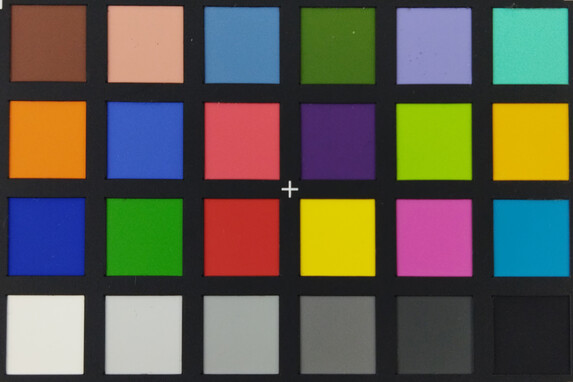

Accessories and Warranty - Protective cover and display protector included
Xiaomi includes a 22.5-Watt charger, a USB cable (Type-A to Type-C), a SIM tool, a quick-start manual, and a warranty booklet in the box of the Poco M3. A transparent protective case, and a display protector are also included.
Xiaomi offers 24 months of warranty for the Poco M3.
Input Devices and Operation - A bit of patience is necessary
While the performance of the Snapdragon 662 is sufficient for everyday tasks, the operation is sluggish in some parts. Navigating through the menus is smooth, but starting apps is almost always accompanied by a second to think things over. The same goes for taking pictures or changing between apps, and even closing apps.
Finally, everything works as it should, but for impatient users or those who are used to the smooth operation of 90-Hz displays and/or midrange smartphones, the Poco M3 is a tad too slow. Only unlocking via face recognition or the fingerprint sensor works smoothly without any delay. It succeeds just as fast and reliably as we are used to from the more expensive Xiaomi smartphones.
Display - A good IPS display, but few brightness reserves
Xiaomi has equipped the Poco M3 with an IPS display with a resolution of 2340 x 1080 pixels (FHD+). This results in a form factor of 19.5:9 and pixel density of 395 PPI. The IPS display is protected by Gorilla Glass 3 and offers a refresh rate of 60 Hz.
With a pure white background, the budget smartphone has an average brightness of 428 cd/m², which doesn't make it particularly bright even in the price range below 200 Euros (~$242). When we repeat the measurement with evenly distributed bright and dark image areas (APL50), the maximum is 437 cd/m². Without the brightness sensor, the Xiaomi achieves up to 411 cd/m².
While the Poco M3 still uses PWM for brightness control, it is only used when the display brightness is adjusted to 3% or less, which hardly ever happens in practical usage. In addition, the PWM flickering has a very high frequency at 892.2 Hz, so it should not bother even sensitive users.
| |||||||||||||||||||||||||
Brightness Distribution: 89 %
Center on Battery: 465 cd/m²
Contrast: 2214:1 (Black: 0.21 cd/m²)
ΔE ColorChecker Calman: 1.7 | ∀{0.5-29.43 Ø4.77}
ΔE Greyscale Calman: 2.4 | ∀{0.09-98 Ø5}
96.5% sRGB (Calman 2D)
Gamma: 2.16
CCT: 6664 K
| Xiaomi Poco M3 IPS, 2340x1080, 6.5" | Motorola Moto G9 Play IPS, 1600x720, 6.5" | Realme 7 IPS, 2400x1080, 6.5" | Samsung Galaxy M21 Super AMOLED, 2340x1080, 6.4" | Sony Xperia L4 IPS, 1680x720, 6.2" | Xiaomi Redmi Note 9 IPS LCD, 2340x1080, 6.5" | |
|---|---|---|---|---|---|---|
| Screen | -82% | -65% | 9% | -87% | -9% | |
| Brightness middle (cd/m²) | 465 | 450 -3% | 525 13% | 617 33% | 429 -8% | 553 19% |
| Brightness (cd/m²) | 428 | 428 0% | 512 20% | 614 43% | 404 -6% | 527 23% |
| Brightness Distribution (%) | 89 | 88 -1% | 90 1% | 95 7% | 92 3% | 89 0% |
| Black Level * (cd/m²) | 0.21 | 0.23 -10% | 0.55 -162% | 0.26 -24% | 0.12 43% | |
| Contrast (:1) | 2214 | 1957 -12% | 955 -57% | 1650 -25% | 4608 108% | |
| Colorchecker dE 2000 * | 1.7 | 5.49 -223% | 4.4 -159% | 2.11 -24% | 6.14 -261% | 3.8 -124% |
| Colorchecker dE 2000 max. * | 3.5 | 10.19 -191% | 6.75 -93% | 3.41 3% | 10.51 -200% | 8.7 -149% |
| Greyscale dE 2000 * | 2.4 | 7.5 -213% | 4.3 -79% | 2.6 -8% | 6.6 -175% | 2.2 8% |
| Gamma | 2.16 102% | 2.495 88% | 2.3 96% | 2.073 106% | 2.23 99% | 2.3 96% |
| CCT | 6664 98% | 8711 75% | 7472 87% | 6921 94% | 8346 78% | 6727 97% |
* ... smaller is better
Screen Flickering / PWM (Pulse-Width Modulation)
| Screen flickering / PWM detected | 893 Hz | ≤ 3 % brightness setting | |
The display backlight flickers at 893 Hz (worst case, e.g., utilizing PWM) Flickering detected at a brightness setting of 3 % and below. There should be no flickering or PWM above this brightness setting. The frequency of 893 Hz is quite high, so most users sensitive to PWM should not notice any flickering. In comparison: 53 % of all tested devices do not use PWM to dim the display. If PWM was detected, an average of 8081 (minimum: 5 - maximum: 343500) Hz was measured. | |||
The Xiaomi smartphone offers the best color reproduction, if you change from the default "Automatic" color scheme to the "Standard" scheme. At a maximum Delta-E of 3.5, not only are the colors and grayscale values fairly accurate, but the color temperature and gamma value as well.
Display Response Times
| ↔ Response Time Black to White | ||
|---|---|---|
| 28 ms ... rise ↗ and fall ↘ combined | ↗ 13.2 ms rise | |
| ↘ 14.8 ms fall | ||
| The screen shows relatively slow response rates in our tests and may be too slow for gamers. In comparison, all tested devices range from 0.1 (minimum) to 240 (maximum) ms. » 70 % of all devices are better. This means that the measured response time is worse than the average of all tested devices (20.2 ms). | ||
| ↔ Response Time 50% Grey to 80% Grey | ||
| 44 ms ... rise ↗ and fall ↘ combined | ↗ 20.4 ms rise | |
| ↘ 23.6 ms fall | ||
| The screen shows slow response rates in our tests and will be unsatisfactory for gamers. In comparison, all tested devices range from 0.165 (minimum) to 636 (maximum) ms. » 73 % of all devices are better. This means that the measured response time is worse than the average of all tested devices (31.6 ms). | ||
Outdoors, the Poco M3 is only able to convince to a limited extent. Due to its brightness reserve not being very high, it can be difficult to recognize the contents easily at times. However, the Xiaomi was confronted with a very demanding outdoor scenario in the test: a combination of direct sun, snow cover, and the resulting light reflections.
The viewing angle stability of the IPS display does not come close to that of the more expensive smartphones. Image content already appears noticeably darker, when you look at the screen slightly from the side. While this effect is not very clear in the test screens, in practice it is very noticeable. On the other hand, the color reproduction remains neutral even from very steep viewing angles.
Performance - Sufficient for everyday usage
With the Snapdragon 662 octa-core SoC and its Adreno 610 graphics chip, the performance of the Poco M3 settles in the lower midrange. It isn't quite as fast as the Exynos 9611 used in the Samsung Galaxy M21 or the Mediatek Helio G95 of the Realme 7. However, the performance is sufficient for everyday tasks, even if some things don't go that fast, such as loading apps. Nonetheless, the SoC is still suited for some gaming, as our benchmarks show.
Due to its UFS-2.2 storage, the Poco M3 delivers good read and write rates, but overall it isn't much faster than those using UFS-2.1 storage, such as the Samsung Galaxy M21, for example. The microSD performance is also suitable.
| GFXBench 3.0 | |
| on screen Manhattan Onscreen OGL (sort by value) | |
| Xiaomi Poco M3 | |
| Motorola Moto G9 Play | |
| Realme 7 | |
| Samsung Galaxy M21 | |
| Average Qualcomm Snapdragon 662 (16 - 34, n=10) | |
| Average of class Smartphone (18 - 166, n=155, last 2 years) | |
| 1920x1080 1080p Manhattan Offscreen (sort by value) | |
| Xiaomi Poco M3 | |
| Motorola Moto G9 Play | |
| Realme 7 | |
| Samsung Galaxy M21 | |
| Average Qualcomm Snapdragon 662 (19 - 21, n=10) | |
| Average of class Smartphone (12 - 606, n=154, last 2 years) | |
| GFXBench 3.1 | |
| on screen Manhattan ES 3.1 Onscreen (sort by value) | |
| Xiaomi Poco M3 | |
| Motorola Moto G9 Play | |
| Realme 7 | |
| Samsung Galaxy M21 | |
| Average Qualcomm Snapdragon 662 (11 - 26, n=10) | |
| Average of class Smartphone (11 - 166, n=155, last 2 years) | |
| 1920x1080 Manhattan ES 3.1 Offscreen (sort by value) | |
| Xiaomi Poco M3 | |
| Motorola Moto G9 Play | |
| Realme 7 | |
| Samsung Galaxy M21 | |
| Average Qualcomm Snapdragon 662 (13 - 14, n=10) | |
| Average of class Smartphone (8.4 - 413, n=154, last 2 years) | |
| AnTuTu v8 - Total Score (sort by value) | |
| Xiaomi Poco M3 | |
| Motorola Moto G9 Play | |
| Realme 7 | |
| Samsung Galaxy M21 | |
| Average Qualcomm Snapdragon 662 (167471 - 185542, n=9) | |
| AImark - Score v2.x (sort by value) | |
| Xiaomi Poco M3 | |
| Realme 7 | |
| Average Qualcomm Snapdragon 662 (4660 - 15832, n=7) | |
| Jetstream 2 - 2.0 Total Score | |
| Average of class Smartphone (23.8 - 387, n=147, last 2 years) | |
| Realme 7 (Chrome 86) | |
| Motorola Moto G9 Play (Chrome 85) | |
| Xiaomi Poco M3 (Chrome 87.0.4280.101) | |
| Average Qualcomm Snapdragon 662 (30.4 - 32.4, n=10) | |
| Samsung Galaxy M21 (Chrome 85) | |
| Xiaomi Redmi Note 9 (Chrome 85) | |
| JetStream 1.1 - Total Score | |
| Realme 7 (Chrome 86) | |
| Xiaomi Redmi Note 9 (Chrome 85) | |
| Average Qualcomm Snapdragon 662 (47.8 - 53.7, n=9) | |
| Samsung Galaxy M21 (Chrome 85) | |
| Xiaomi Poco M3 (Chrome 87.0.4280.101) | |
| Speedometer 2.0 - Result 2.0 | |
| Average of class Smartphone (15.2 - 643, n=119, last 2 years) | |
| Realme 7 (Chome 86) | |
| Motorola Moto G9 Play (Chome 85) | |
| Xiaomi Poco M3 (Chrome 87.0.4280.101) | |
| Average Qualcomm Snapdragon 662 (26.5 - 29.3, n=9) | |
| Xiaomi Redmi Note 9 (Chrome 85) | |
| Samsung Galaxy M21 (Chome 85) | |
| WebXPRT 3 - Overall | |
| Average of class Smartphone (38 - 380, n=30, last 2 years) | |
| Samsung Galaxy M21 (Chrome 85) | |
| Realme 7 (Chrome 86) | |
| Average Qualcomm Snapdragon 662 (51 - 59, n=11) | |
| Xiaomi Poco M3 (Chrome 87.0.4280.101) | |
| Motorola Moto G9 Play (Chrome 85) | |
| Xiaomi Redmi Note 9 (Chrome 85) | |
| Octane V2 - Total Score | |
| Average of class Smartphone (2228 - 126661, n=194, last 2 years) | |
| Realme 7 (Chrome 86) | |
| Xiaomi Redmi Note 9 (Chrome 85) | |
| Samsung Galaxy M21 (Chrome 85) | |
| Average Qualcomm Snapdragon 662 (8893 - 10247, n=14) | |
| Motorola Moto G9 Play (Chrome 85) | |
| Xiaomi Poco M3 (Chrome 87.0.4280.101) | |
| Mozilla Kraken 1.1 - Total | |
| Samsung Galaxy M21 (Chrome 85) | |
| Xiaomi Poco M3 (Chrome 87.0.4280.101) | |
| Motorola Moto G9 Play (Chrome 85) | |
| Average Qualcomm Snapdragon 662 (3779 - 4650, n=11) | |
| Xiaomi Redmi Note 9 (Chrome 85) | |
| Realme 7 (Chrome 86) | |
| Average of class Smartphone (257 - 28190, n=154, last 2 years) | |
* ... smaller is better
| Xiaomi Poco M3 | Motorola Moto G9 Play | Realme 7 | Samsung Galaxy M21 | Sony Xperia L4 | Xiaomi Redmi Note 9 | Average 128 GB UFS 2.2 Flash | Average of class Smartphone | |
|---|---|---|---|---|---|---|---|---|
| AndroBench 3-5 | -23% | -3% | -13% | -38% | -19% | 31% | 290% | |
| Sequential Read 256KB (MB/s) | 509 | 315.2 -38% | 529 4% | 487.8 -4% | 293.4 -42% | 306.6 -40% | 739 ? 45% | 2235 ? 339% |
| Sequential Write 256KB (MB/s) | 269.2 | 187.2 -30% | 200 -26% | 192.7 -28% | 165 -39% | 248.1 -8% | 536 ? 99% | 1871 ? 595% |
| Random Read 4KB (MB/s) | 147 | 98.4 -33% | 153.3 4% | 126 -14% | 61.2 -58% | 65.1 -56% | 193.6 ? 32% | 297 ? 102% |
| Random Write 4KB (MB/s) | 154.1 | 96.1 -38% | 151.3 -2% | 124.2 -19% | 22.5 -85% | 146.9 -5% | 186.7 ? 21% | 343 ? 123% |
| Sequential Read 256KB SDCard (MB/s) | 85.9 ? | 85.4 ? -1% | 84.6 ? -2% | 77.9 ? -9% | 83.5 ? -3% | 84.4 ? -2% | 82.3 ? -4% | |
| Sequential Write 256KB SDCard (MB/s) | 64.2 ? | 65.3 ? 2% | 66.3 ? 3% | 62.2 ? -3% | 62.5 ? -3% | 63.5 ? -1% | 59.1 ? -8% |
Games - Also fun on a 150-Euro smartphone
Even a 150-Euro smartphone such as the Poco M3 can be quite suitable for gaming. In the Xiaomi, there are also the stereo speakers placed on the two short sides, so they offer a good sound image in landscape format. Of course the performance reserves are limited due to the Snapdragon 662, but they are still sufficient for playing graphically simpler games such as "Armajet," for example.
At times, you have to lower the graphics details in more hardware-intensive games to keep the gaming fun going. "PUBG Mobile" does this by itself: in the popular shooter, the maximum available graphics detail is "Balanced," which is the second lowest setting. Even then, "PUBG Mobile" still won't run completely smoothly, but it still remains easily playable at an average of 25 frames per second. We measure the FPS values with the Gamebench tool.
Emissions - Stereo speakers onboard
Temperature
At an average of 32.4 °C (90 °F), the Xiaomi Poco M3 only gets hand warm even under load, so it never feels too hot in the hand. Internally, the smartphone also manages things well in terms of the temperatures.
As the benchmarks show, the Snapdragon 662 is always able to use its maximum performance fully, and there is no throttling due to heat problems. This is shown by the battery test scenarios of GFXBench, for example, where the Poco M3 renders the test scenes 30 times in a row each, without the frame rates dropping. In the Wild Life stress test of 3DMark, the stability score is practically perfect at 99.5%.
| 3DMark - Wild Life Stress Test Stability | |
| Xiaomi Poco M3 | |
(+) The maximum temperature on the upper side is 37.5 °C / 100 F, compared to the average of 35.2 °C / 95 F, ranging from 21.9 to 247 °C for the class Smartphone.
(+) The bottom heats up to a maximum of 32.9 °C / 91 F, compared to the average of 34 °C / 93 F
(+) In idle usage, the average temperature for the upper side is 27 °C / 81 F, compared to the device average of 32.9 °C / 91 F.
Speakers
Stereo speakers are something special in the price class below 200 Euros (~$242), and the Xiaomi Poco M3 is able to score with just that. The speakers are placed on both short sides of the smartphone and produce a surprisingly good sound whose only weakness is the bass range. You can also connect a headset to the smartphone via the 3.5-mm audio port or Bluetooth 5.0.
Xiaomi Poco M3 audio analysis
(+) | speakers can play relatively loud (85.1 dB)
Bass 100 - 315 Hz
(-) | nearly no bass - on average 26.1% lower than median
(±) | linearity of bass is average (12.6% delta to prev. frequency)
Mids 400 - 2000 Hz
(+) | balanced mids - only 3% away from median
(+) | mids are linear (5.3% delta to prev. frequency)
Highs 2 - 16 kHz
(+) | balanced highs - only 4.5% away from median
(+) | highs are linear (2.9% delta to prev. frequency)
Overall 100 - 16.000 Hz
(±) | linearity of overall sound is average (18% difference to median)
Compared to same class
» 16% of all tested devices in this class were better, 8% similar, 76% worse
» The best had a delta of 11%, average was 35%, worst was 134%
Compared to all devices tested
» 37% of all tested devices were better, 8% similar, 55% worse
» The best had a delta of 4%, average was 24%, worst was 134%
Samsung Galaxy M21 audio analysis
(+) | speakers can play relatively loud (83.8 dB)
Bass 100 - 315 Hz
(-) | nearly no bass - on average 69% lower than median
(+) | bass is linear (0% delta to prev. frequency)
Mids 400 - 2000 Hz
(-) | nearly no mids - on average 69% lower than median
(+) | mids are linear (0% delta to prev. frequency)
Highs 2 - 16 kHz
(-) | nearly no highs - on average 69% lower than median
(+) | highs are linear (0% delta to prev. frequency)
Overall 100 - 16.000 Hz
(-) | overall sound is not linear (119.9% difference to median)
Compared to same class
» 89% of all tested devices in this class were better, 8% similar, 3% worse
» The best had a delta of 11%, average was 35%, worst was 134%
Compared to all devices tested
» 97% of all tested devices were better, 3% similar, 1% worse
» The best had a delta of 4%, average was 24%, worst was 134%
Battery Life - The 6000-mAh battery also works as a power bank
Power Consumption
Although the Poco M3 supports charging at up to 18 watts, the box includes even a 22.5-Watt charger. This is able to completely recharge the Xiaomi within 2:40 hours in our test, which is a fairly good value considering the large 6000-mAh battery.
While the smartphone does not support wireless charging, it supports reverse wired charging. This means that you can also use the smartphone as a power bank to charge other devices. However, the corresponding cable for this is not included.
| Off / Standby | |
| Idle | |
| Load |
|
Key:
min: | |
| Xiaomi Poco M3 6000 mAh | Samsung Galaxy M21 6000 mAh | Xiaomi Redmi Note 9 5020 mAh | Average Qualcomm Snapdragon 662 | Average of class Smartphone | |
|---|---|---|---|---|---|
| Power Consumption | -47% | -18% | -39% | -39% | |
| Idle Minimum * (Watt) | 0.5 | 1.2 -140% | 0.74 -48% | 0.846 ? -69% | 0.847 ? -69% |
| Idle Average * (Watt) | 1.84 | 1.8 2% | 2.17 -18% | 2.51 ? -36% | 1.446 ? 21% |
| Idle Maximum * (Watt) | 1.87 | 2.1 -12% | 2.2 -18% | 2.72 ? -45% | 1.63 ? 13% |
| Load Average * (Watt) | 3.99 | 6.2 -55% | 4.17 -5% | 4.99 ? -25% | 6.95 ? -74% |
| Load Maximum * (Watt) | 6.01 | 7.9 -31% | 6.11 -2% | 7.16 ? -19% | 11.3 ? -88% |
* ... smaller is better
Battery Life
With its combination of a low power consumption and XXL battery, the Xiaomi Poco M3 achieves an excellent battery life. In the simulated web surfing, it lasts for almost 21 hours and when playing a video, still for almost 19.5 hours. With regular usage, the Xiaomi Poco M3 should at least be able to last for two, if not three, days without needing a recharge. Among our comparison devices, only the Samsung Galaxy M21 is able to keep up with it, since that also has a 6000-mAh battery.
| Xiaomi Poco M3 6000 mAh | Motorola Moto G9 Play 5000 mAh | Realme 7 5000 mAh | Samsung Galaxy M21 6000 mAh | Sony Xperia L4 3580 mAh | Xiaomi Redmi Note 9 5020 mAh | |
|---|---|---|---|---|---|---|
| Battery runtime | -23% | -19% | -6% | -37% | -18% | |
| Reader / Idle (h) | 45.9 | 38.3 -17% | 38.2 -17% | |||
| H.264 (h) | 19.4 | 22.5 16% | 18.6 -4% | |||
| WiFi v1.3 (h) | 20.8 | 16 -23% | 16.8 -19% | 21.6 4% | 13.1 -37% | 14.5 -30% |
| Load (h) | 6.7 | 4.8 -28% | 5.2 -22% |
Pros
Cons
Verdict - A lot of smartphone for 150 Euros
At a purchase price of 150 Euros (~$181) for the 64-GB version, the Xiaomi Poco M3 is very affordable. Even the 128-GB version is still affordable at 170 Euros (~$205). However, with 4 GB of RAM and the Snapdragon 662, the budget smartphone is not a performance champion and can respond sluggishly at times. But the performance is still sufficient for everyday tasks, and even allows you to play one or the other game sometimes. On the other hand, we would have liked a slightly brighter IPS screen, since the display, which is otherwise good, quickly hits its limits outdoors.
The Xiaomi Poco M3 offers a solid performance and scores with equipment highlights such as stereo speakers and a large 6000-mAh battery.
The rest of the equipment of the Poco M3 is surprisingly extensive. There is a triple-camera system that is able to take acceptable pictures in daylight, real dual-SIM capability, and even stereo speakers, which is a really rare feature in this price class. But the clear equipment highlight is the large 6000-mAh battery that provides the Xiaomi with a very long battery life. The battery can be full recharged in less than 3 hours.
Overall, the Poco M3 delivers a good performance, but it isn't the champion among the budget smartphones. The Samsung Galaxy M21, for example, which also remains below the 200-Euro (~$242) limit, does an even better job. The Samsung also offers a 6000-mAh battery, but it has the clearly better display with its AMOLED screen and in addition also offers NFC, but not stereo speakers.
Price and Availability
You can purchase the 64-GB version of the Poco M3 in Xiaomi's (German) online shop for 150 Euros (~$181) and the 128-GB version for 170 Euro (~$205). At Amazon (Germany), the prices are currently slightly higher. (In the US, the two versions of the Poco M3 are available from global vendors for $149/$169.)
Xiaomi Poco M3
- 01/15/2021 v7 (old)
Manuel Masiero


